b. 1988, Lalitpur, Nepal; lives in Lalitpur, Nepal; works in Kathmandu, Nepal

Photo courtesy of the artist

Photo courtesy of the artist
Shraddha Shrestha is an independent muralist, illustrator, and visual artist based in Kathmandu.
She has a master’s degree in design in illustration from the Glasgow School of Art. She has been active in the street art scene in Kathmandu since 2011. Shraddha Shrestha is currently part of an illustrators collective called Virangana Comicsm and has recently published the first all-women comics anthology in Nepal. Growing up in the aesthetically rich city of Patan has played a big part in her journey as an artist. Much of her art is about fantastical characters which are a reflection of her childhood days and the traditional surroundings.
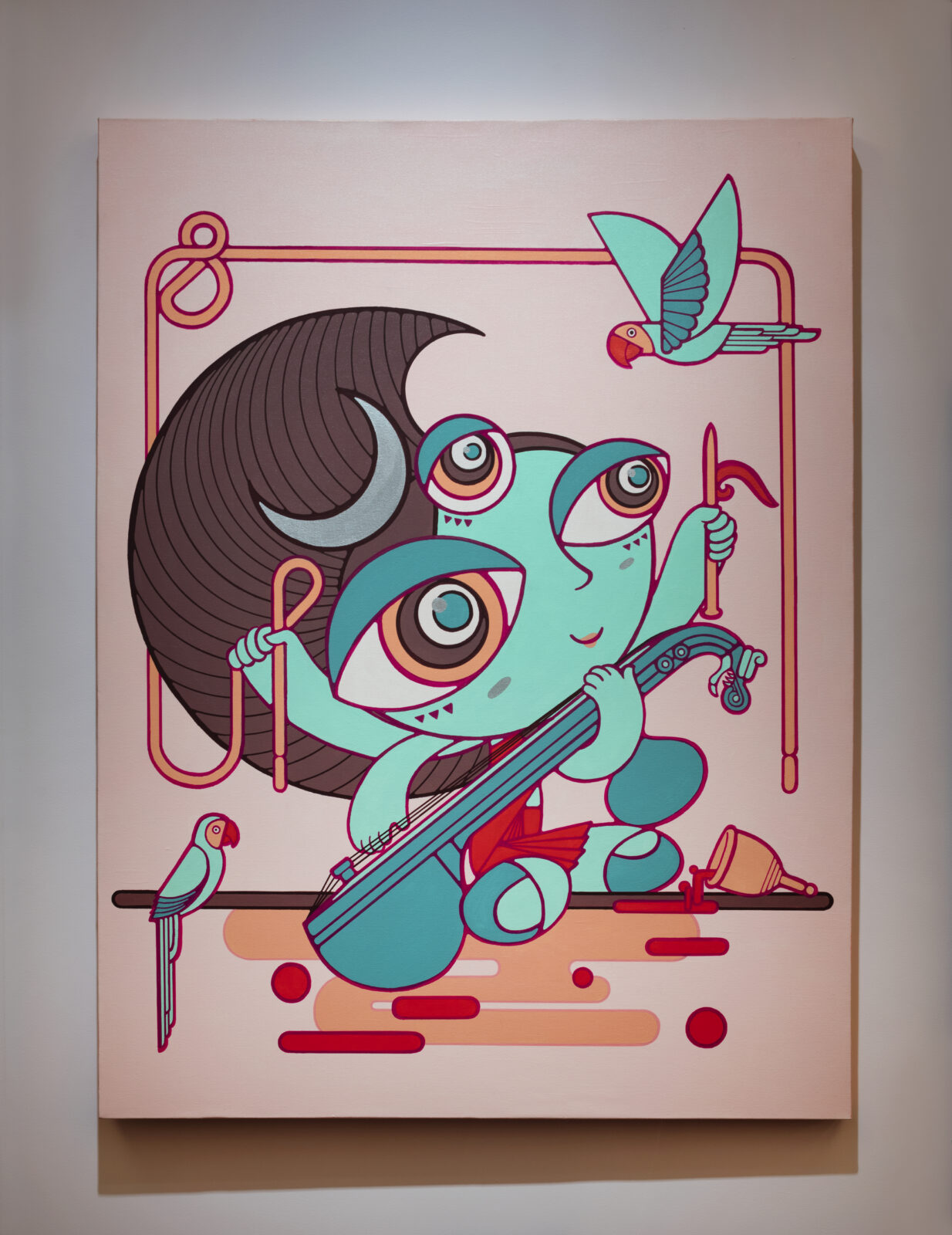
Shraddha Shrestha; Dus Mahavidyas (Great Goddesses of Wisdom): Matangi; 2023; acrylic on canvas; courtesy of the artist; Photo by Dave De Armas
Matangi is the ninth Mahavidya, a tantric form of Saraswati, who embodies the tantric form of learning, wisdom, and the arts. She is the goddess of the outcast, so is considered impure but still worshiped. In ritual practice, she is offered leftovers or organic waste, which represents the state of being after perishing. She is the one who accepts all humans, even those rejected by society. In a tradition where purity is of great importance, she smiles and blesses her devotees, the impure and the outcasts.
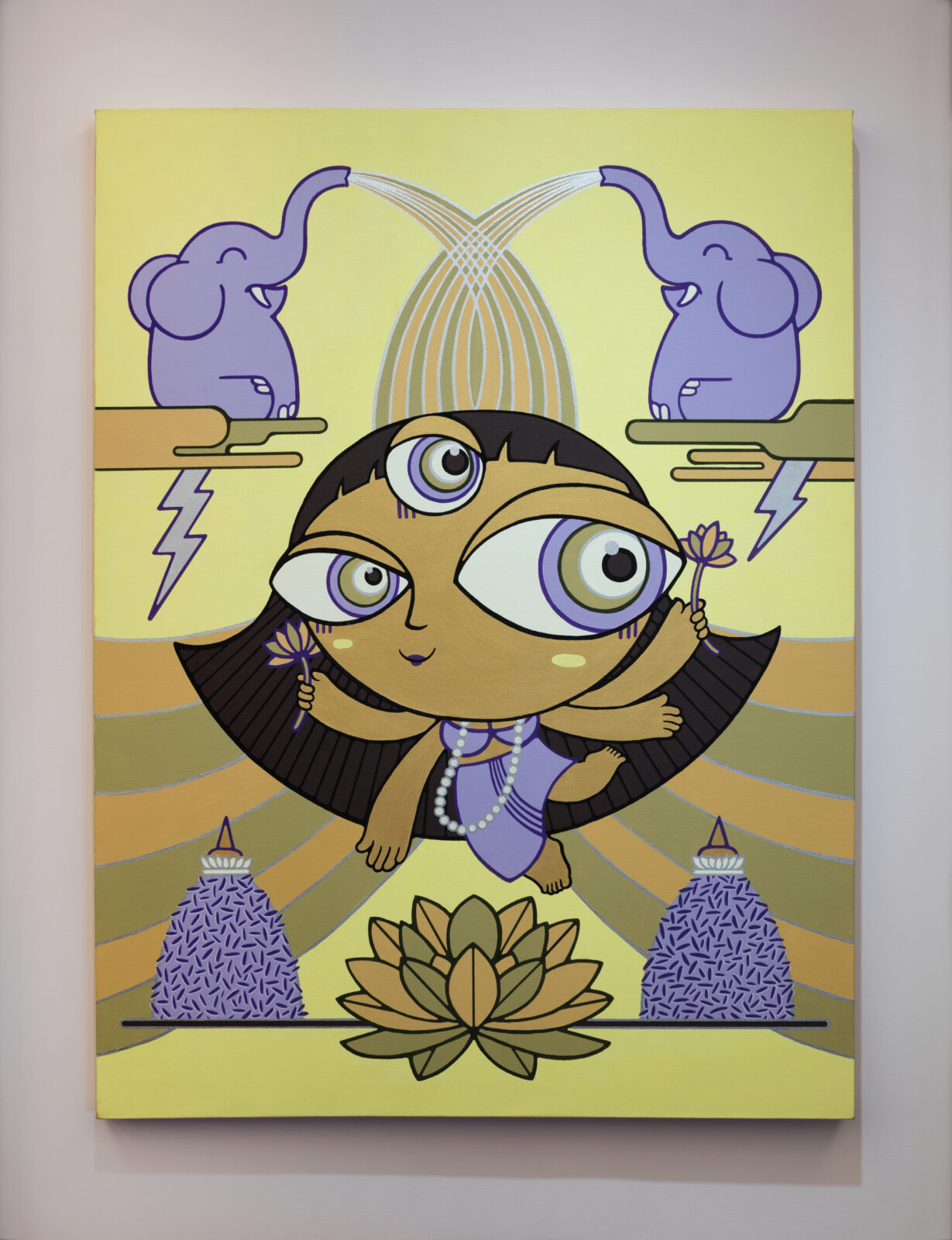
Shraddha Shrestha; Dus Mahavidyas (Great Goddesses of Wisdom): Kamala; 2023; acrylic on canvas; courtesy of the artist; Photo by Dave De Armas
Kamala, the tenth Mahavidya, symbolizes prosperity and fertility, and serves as Shraddha Shrestha’s ancestral deity who also goes by the names Kuldevta and Degudya. She is considered the tantric form of the goddess Lakshmi, depicted in a wooden Nepalese sculpture in this gallery. Kamala’s beauty radiates, and her skin gleams like the sun. Revered as a shield against lightning and the deity associated with fruitful harvests, she is accompanied by two elephants symbolizing rain. She is worshiped with generous offerings of abundant rice and fresh produce.
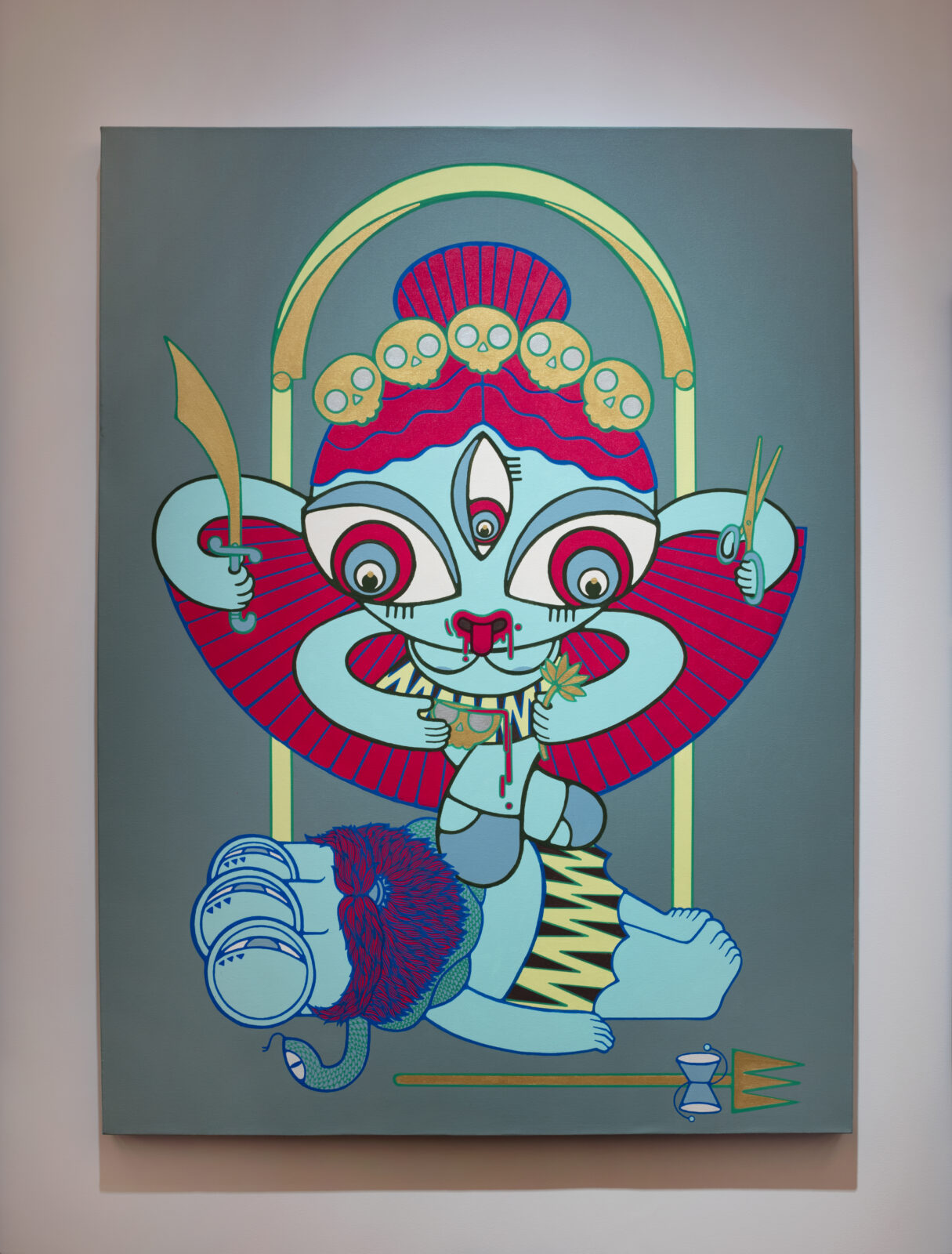
Shraddha Shrestha; Dus Mahavidyas (Great Goddesses of Wisdom): Tara; 2023; acrylic on canvas; courtesy of the artist; Photo by Dave De Armas
The second Mahavidya is the tantric Hindu goddess Tara, not to be confused with the Buddhist form of Tara. She derives her name from “star.” She is the goddess of all sources of energy, and it is believed that the energy of the sun emanates from her. Acting as a maternal figure, she shielded Lord Shiva when he consumed poison churned from the sea. In a realm where men typically assume the role of protectors, she stands as a guide, protector, and grantor of salvation for humanity.
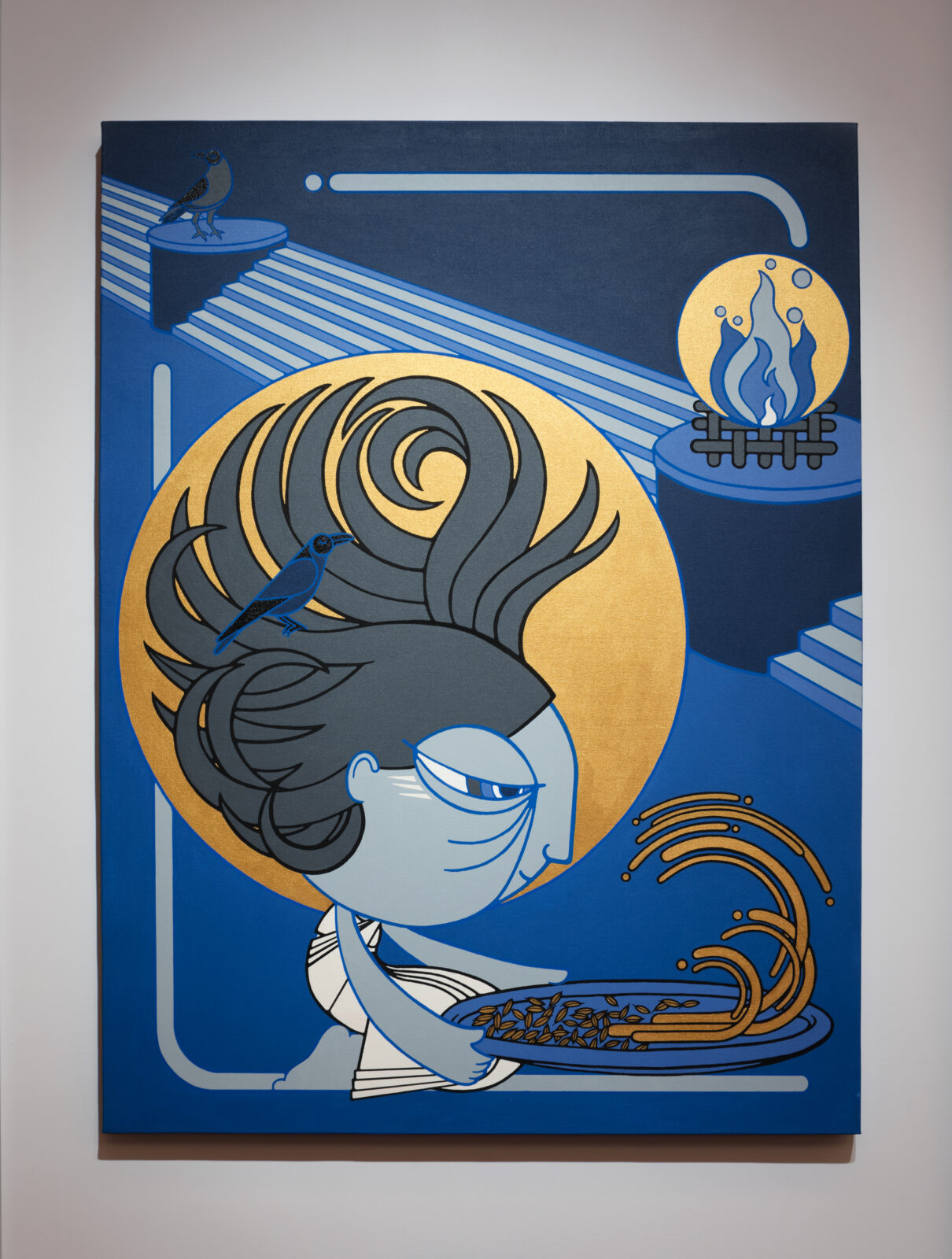
Shraddha Shrestha; Dus Mahavidyas (Great Goddesses of Wisdom): Dhumavati; 2023; acrylic on canvas; courtesy of the artist; Photo by Dave De Armas
Dhumavati, the seventh Mahavidya, embodies the inauspicious and unattractive and is associated with the crow. Considered the widow goddess, she is aged, wrinkled, and fragile, and she symbolizes the transitional phase between creation and dissolution. Her abode is in the realm of sorrow, believed to be situated in the cremation grounds where beings meet their end, which resonates with her name meaning “smoke.” Despite these grim aspects, she assumes the role of a profound teacher, bestowing the wisdom of life and death.
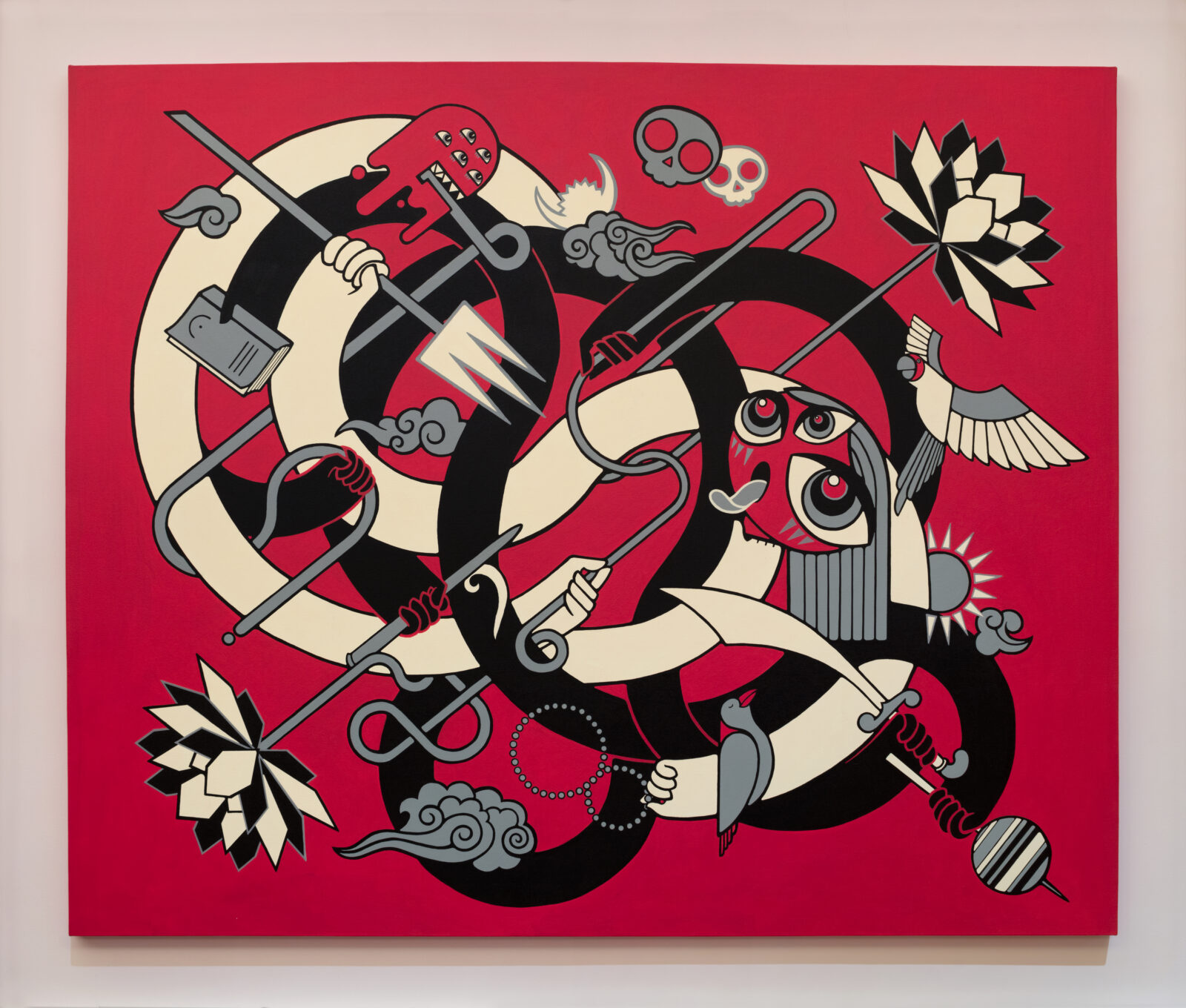
Shraddha Shrestha; Dus Mahavidyas (Great Goddesses of Wisdom): Sangraha; 2023; acrylic on canvas; courtesy of the artist; Photo by Dave De Armas
Sangraha, in Hinduism, signifies the act of gathering. In this image the artist reimagines the ten Mahavidyas as a compilation of their iconographic traits including weapons, birds, books, lotuses, and more. These iconographic traits represent each of the Mayavidyas’ divine powers, such as the sun for Tara, whose power is to be the source of all energy, and the crow for Dhumavati, whose power is the wisdom of the life and death cycle. Together they represent the potency of the ten goddesses working as one to solve the problems of humanity. This suggests the power inherent in people who find ways to work together as a community.
This object from the Rubin Museum’s collection is presented in the Reimagine exhibition in dialogue with Dus Mahavidyas (Great Goddesses of Wisdom), inviting new ways of encountering traditional Himalayan art.
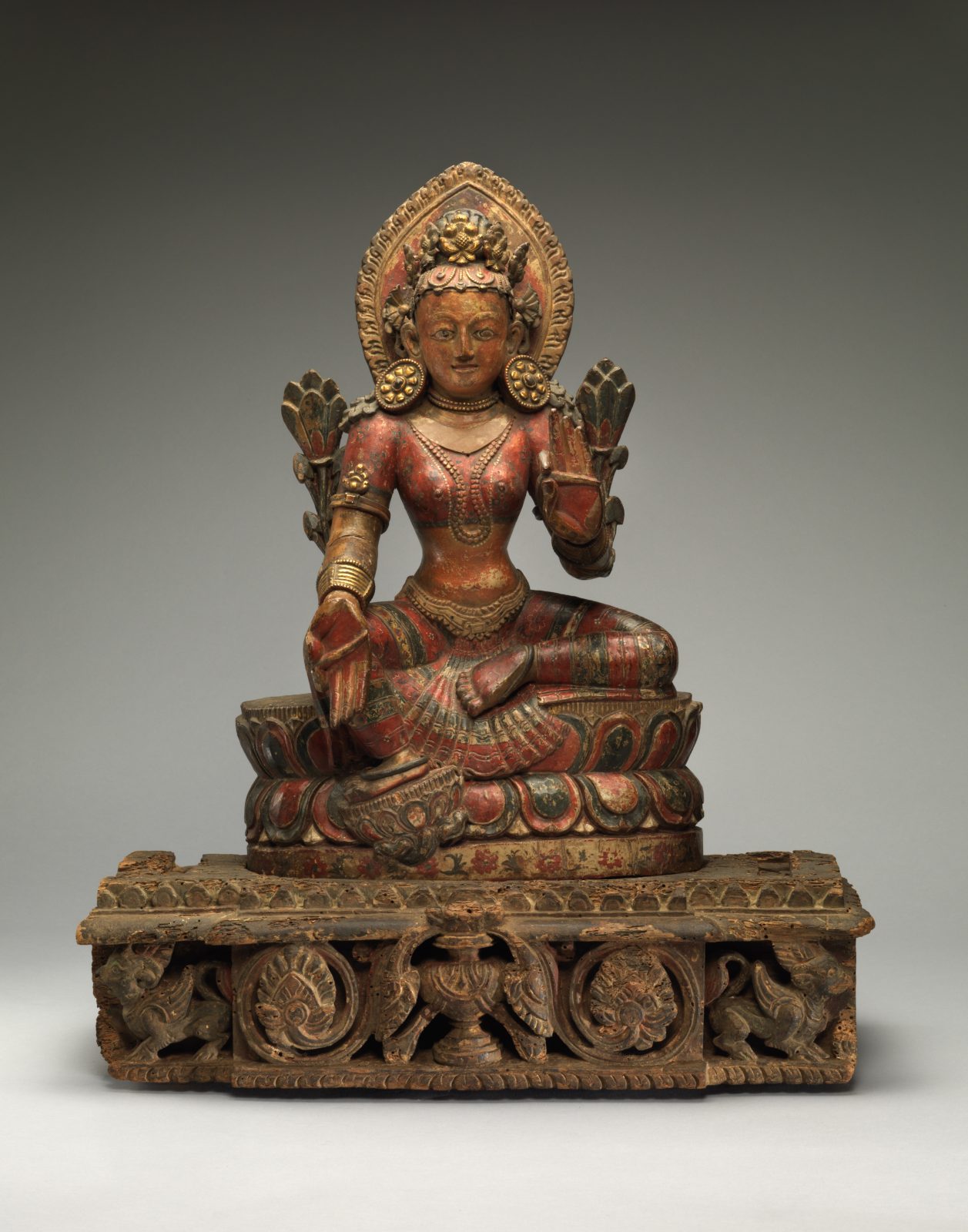
Lotus Goddess, Lakshmi; Nepal; 17th century; Wood with pigments and gilt repoussé; Rubin Museum of Himalayan Art, Formerly of Joe Gelpey Collection; C2008.1a-b
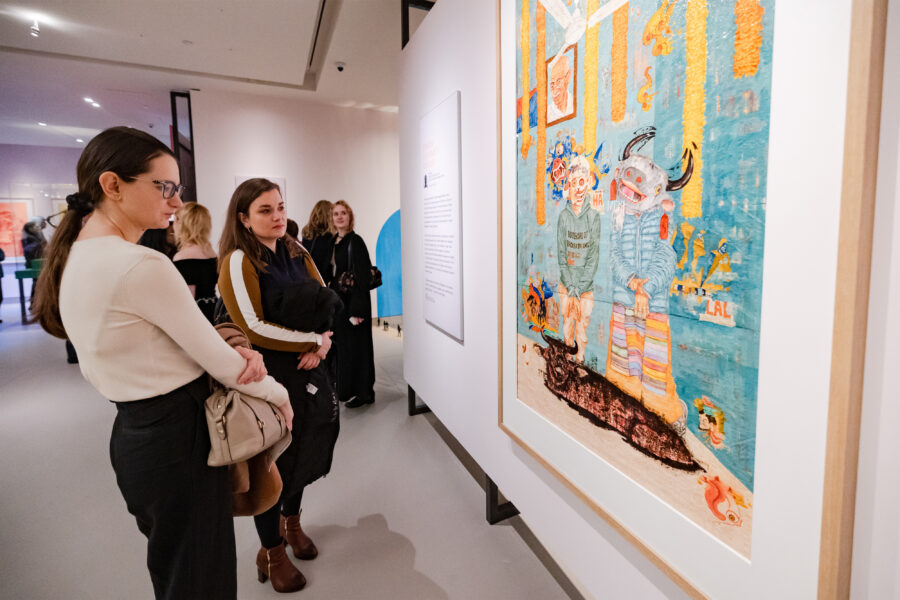
Wrightwood 659
Chicago, IL

Rubin Museum
150 W. 17th St., NYC

Get the latest news and stories from the Rubin, plus occasional information on how to support our work.